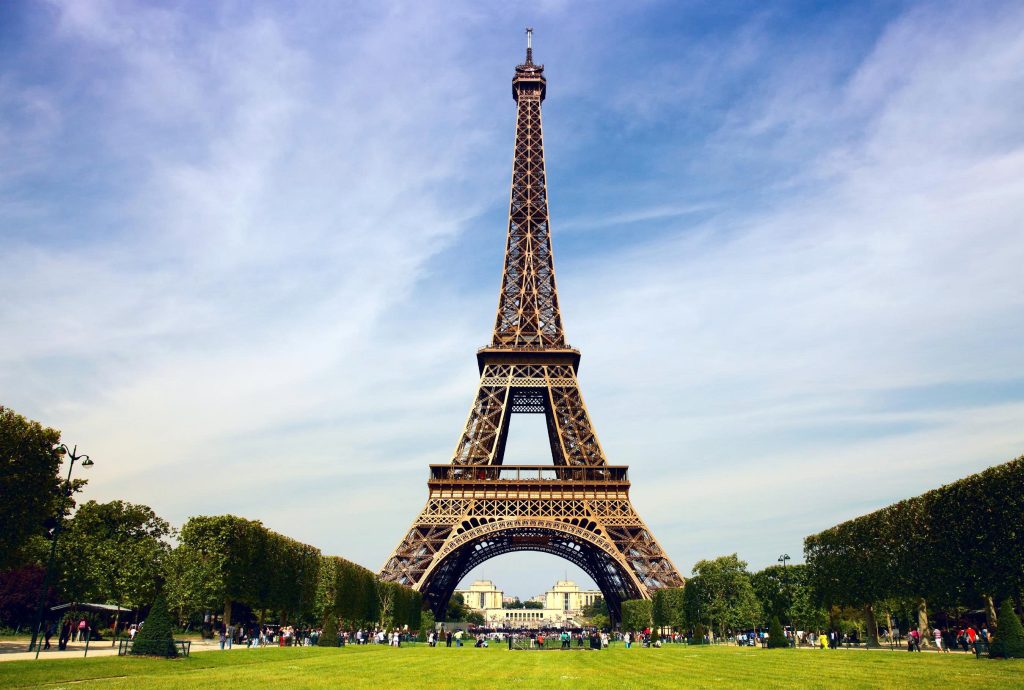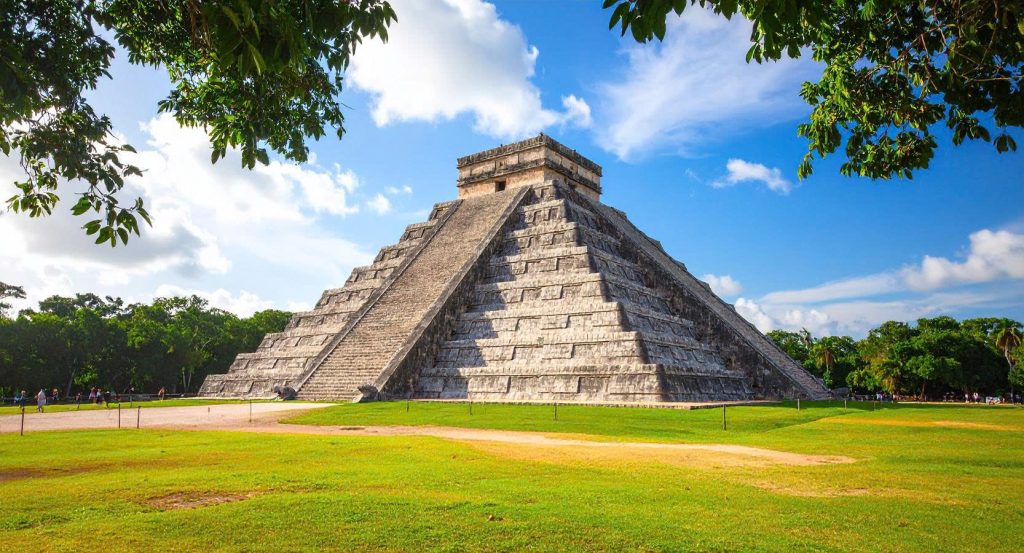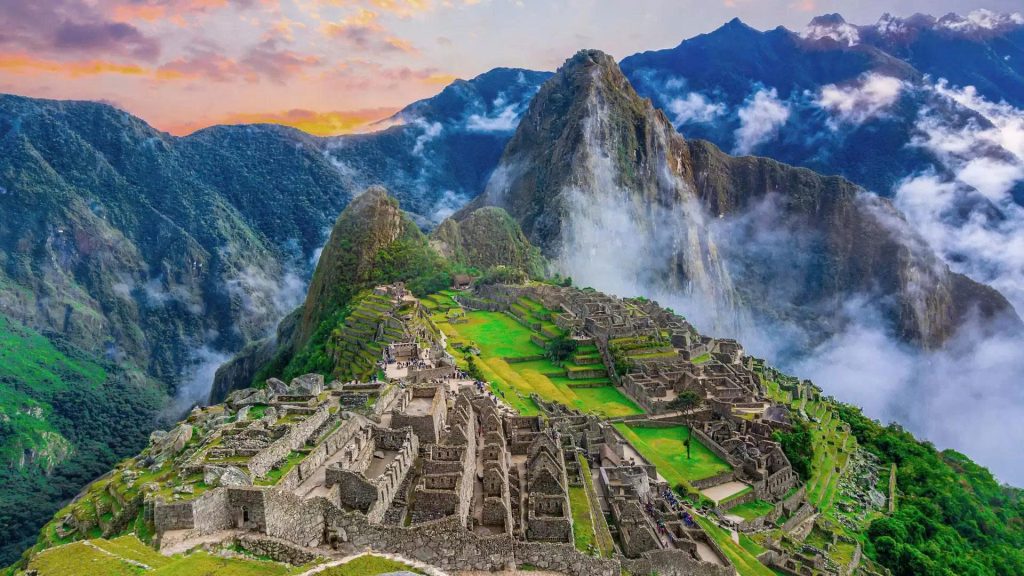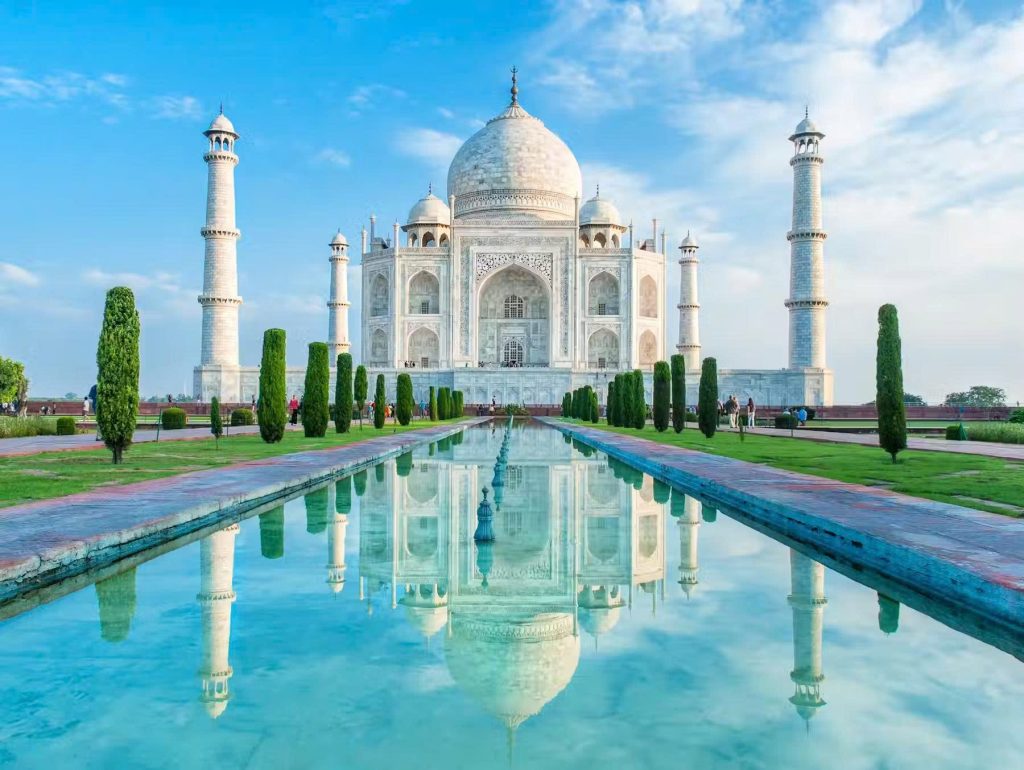Throughout human history, people have strived to create structures that defy the imagination and stand as eternal testaments to their civilization’s skill, vision, and spiritual depth. These magnificent monuments, spanning millennia and continents, have captivated travelers and inspired awe for centuries. They are not merely buildings; they are physical links to our collective past.
While the original, limited list of the Seven Wonders of the Ancient World has mostly faded into history, a new list of modern marvels was globally chosen in 2007 to represent the world’s most incredible cultural treasures. These sites showcase humanity’s continuous ingenuity, from the Maya’s astronomical precision to the vast, ambitious scale of the Roman Empire.
This article will take you on a detailed journey to each of the New 7 Wonders of the World. We’ll provide an in-depth look at their fascinating history, their current global significance, and essential, experience-backed travel tips to help you plan your own unforgettable, logistically sound adventure. We’ll also briefly touch on the ancient wonders to provide the full historical context for these breathtaking achievements, establishing the expertise necessary for such a profound global exploration.
The 7 Wonders of the Ancient World: The Historical Context
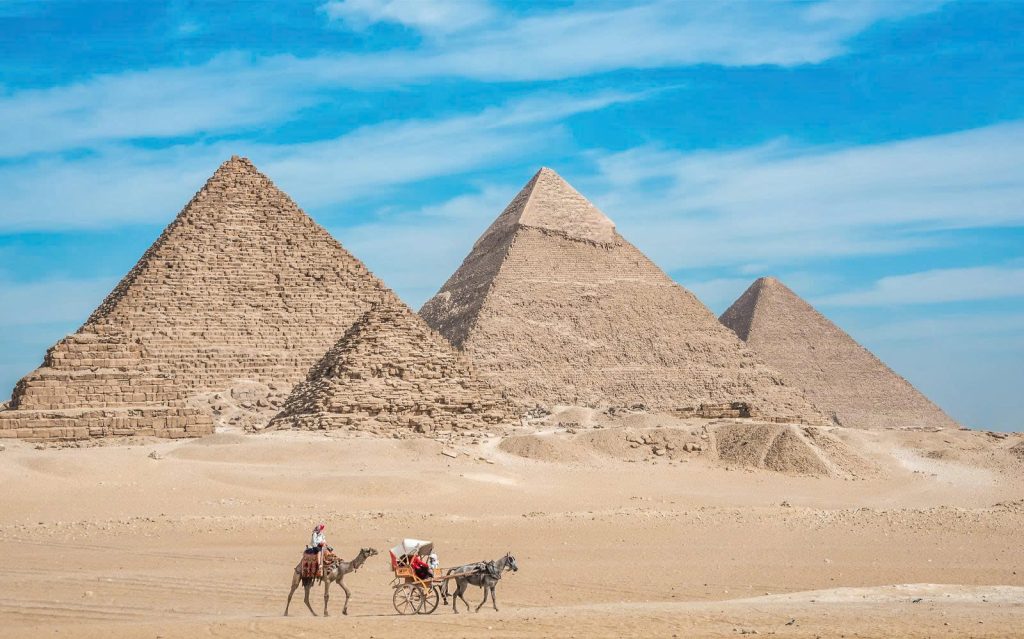
Before we explore the contemporary list, it is crucial to understand the foundation: the original seven wonders. This list was compiled by Hellenic travelers and scholars in the ancient world, primarily focusing on structures accessible within the Mediterranean region. Sadly, only one of these magnificent structures remains largely intact today.
The Original Seven
The original list included structures that represented the pinnacle of classical engineering and artistry. Six of these were destroyed primarily by earthquakes or fire over the centuries:
- The Great Pyramid of Giza (Egypt): The only survivor, a monumental achievement in engineering and mathematics.
- The Hanging Gardens of Babylon (Iraq): A legendary wonder, its very existence and location are still debated by archaeologists today.
- The Statue of Zeus at Olympia (Greece): A colossal statue crafted by the master sculptor Phidias, depicting the king of the Olympian gods.
- The Temple of Artemis at Ephesus (Turkey): A beautiful temple dedicated to the Greek goddess of the hunt.
- The Mausoleum at Halicarnassus (Turkey): A monumental tomb built for Mausolus, the satrap of the Persian Empire.
- The Colossus of Rhodes (Greece): A massive bronze statue of the Greek sun god Helios.
- The Lighthouse of Alexandria (Egypt): A towering structure used to guide sailors into the harbor.
Of this ancient list, only the Great Pyramid of Giza still stands, a powerful link to a distant past. Due to its enduring status, it was granted the status of an honorary candidate on the new list.
RELATED: Top 20 Things to Do in Cairo Egypt: Ultimate Cairo Itinerary
The New 7 Wonders of the World: A Journey Through Time and Place
In 2007, over 100 million people worldwide participated in a global poll conducted by the New7Wonders Foundation to select a new set of wonders that reflect global heritage and continue to inspire awe. The sites chosen are not only architectural masterpieces but also living symbols of their respective cultures, representing achievement across diverse eras and geographies.
1. The Great Wall of China

A Serpent Dragon of Stone and Earth
Stretching for thousands of miles across northern China, the Great Wall of China is the ultimate monumental feat of engineering and human will. It is a series of fortifications built across the historical northern borders of ancient Chinese states to protect against invasions from Eurasian nomadic groups.
History and Significance
Construction of various sections of the wall began as early as the 7th century BC. However, the most famous, well-preserved sections date from the Ming Dynasty (1368–1644 AD). The Wall’s purpose was not always purely defensive; it also served for border control, trade regulation (like the Silk Road), and communication. While it did not always succeed in its military purpose, it has come to symbolize the unity, strength, and resilience of the Chinese people and their historical desire to delineate civilization from the wilderness. It is, arguably, the largest historical structure on Earth, with official measurements placing its total length at over 21,000 kilometers (13,000 miles), including trenches and natural barriers.
Location and Best Sections to Visit
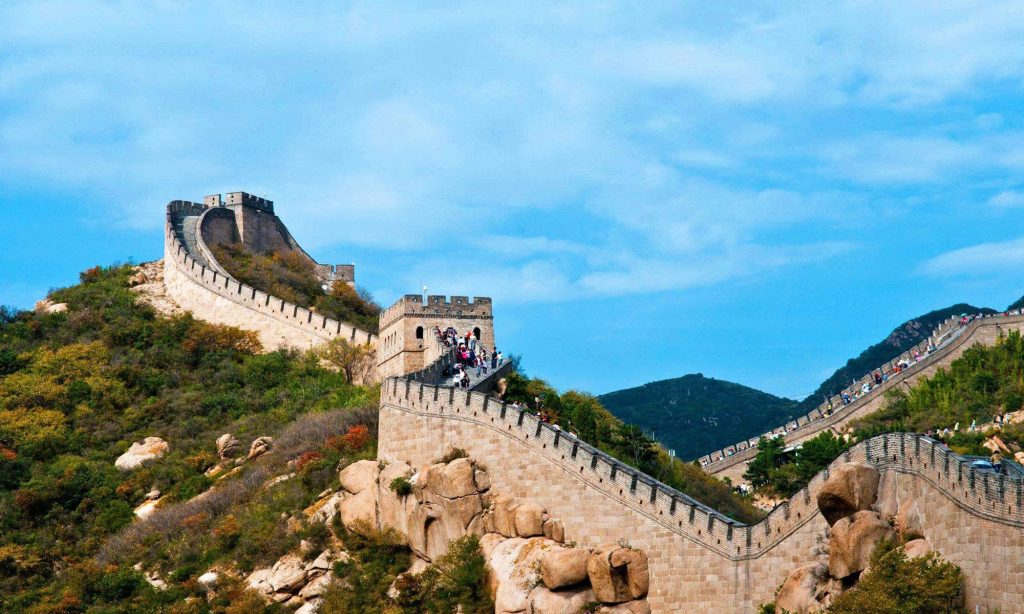
The Wall is not a single, continuous structure. For travelers, the key is choosing the right section:
- Badaling: The most popular and easily accessible section near Beijing. It is heavily restored and often very crowded, but it offers cable car access for those with mobility issues.
- Mutianyu: Widely considered the best compromise. It is fully restored, less crowded than Badaling, and features a thrilling toboggan ride down.
- Jinshanling & Simatai: Ideal for adventurers and experienced hikers. These sections are semi-restored, offering a rugged, more authentic feel and breathtaking views of the Wall snaking over the mountains. They require more challenging hikes and are further from Beijing.
Tips and Getting There
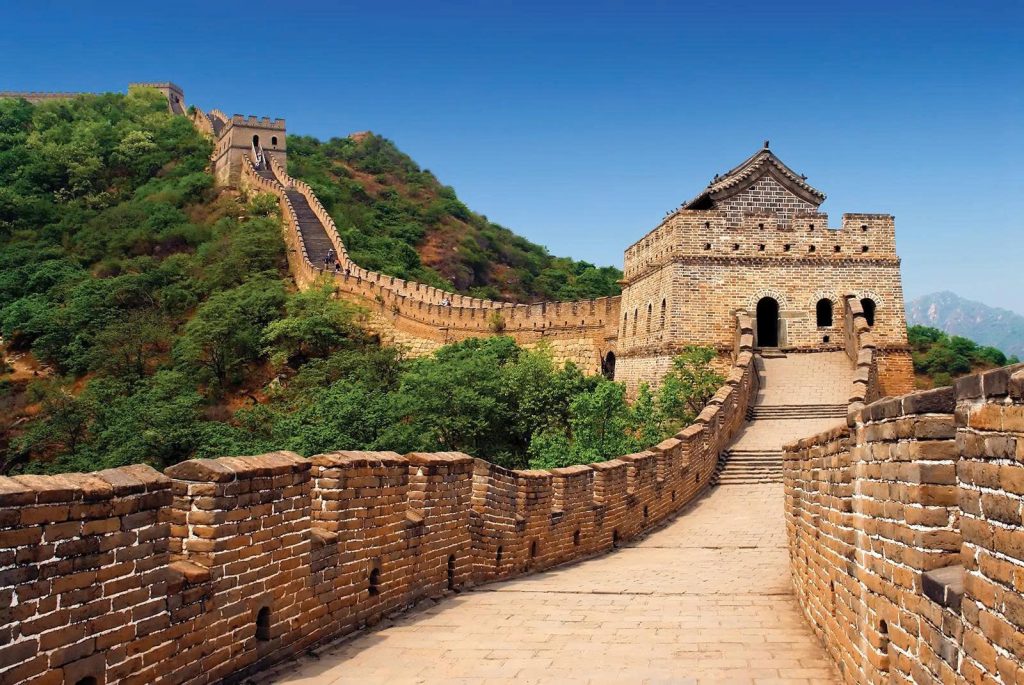
- Best Time to Visit: Spring (April-May) and Autumn (September-October) offer the most comfortable weather for walking. Avoid the summer months (June-August) due to high heat and China’s national holidays, which bring massive crowds.
- Getting There: For the remote sections like Jinshanling, arrange transportation well in advance via a private driver or small-group tour. For Badaling or Mutianyu, direct tourist buses are readily available from Beijing.
- Tip: Always wear sturdy walking shoes—the steps are uneven and steep in many places. Carry water and snacks, as services on the less popular sections are limited. Allow at least half a day for the visit, plus travel time.
RELATED: Exploring the Great Wall of China: Guide to History,Sections, & Tips
2. Petra (Jordan)
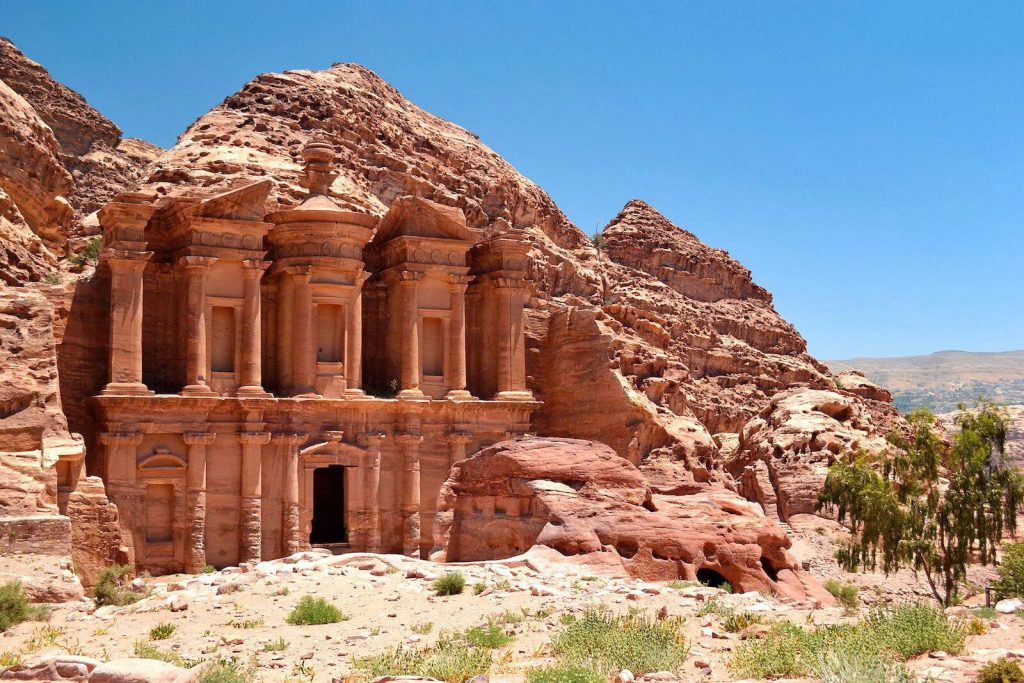
Al-Khazneh is Petra’s most iconic rock-cut temple, famous for its grand facade.
The Rose City Carved by the Nabateans
Hidden within a desert canyon in southwestern Jordan, Petra is an ancient city of unparalleled beauty, carved directly into vibrant rose-colored sandstone cliffs. It was the capital of the Nabatean Kingdom, a major trading hub that flourished between 400 BC and 106 AD.
History and Significance
Petra’s fame rests largely on its most famous structure, Al-Khazneh (The Treasury), a stunning funerary temple with an ornate Hellenistic facade. But the city is vast, filled with hundreds of rock-cut tombs, temples, and residential buildings. The Nabateans were not just traders; they were masters of water engineering, creating an ingenious system of dams, cisterns, and conduits that allowed their city to thrive in the harsh desert environment—a testament to their survival and ingenuity. Petra lay undiscovered by the Western world for centuries, earning it the enduring nickname “Rose City.” The city’s complex blend of Nabatean, Greek, and Roman architectural styles reflects its strategic position at the crossroads of ancient trade routes.
Location and Getting There
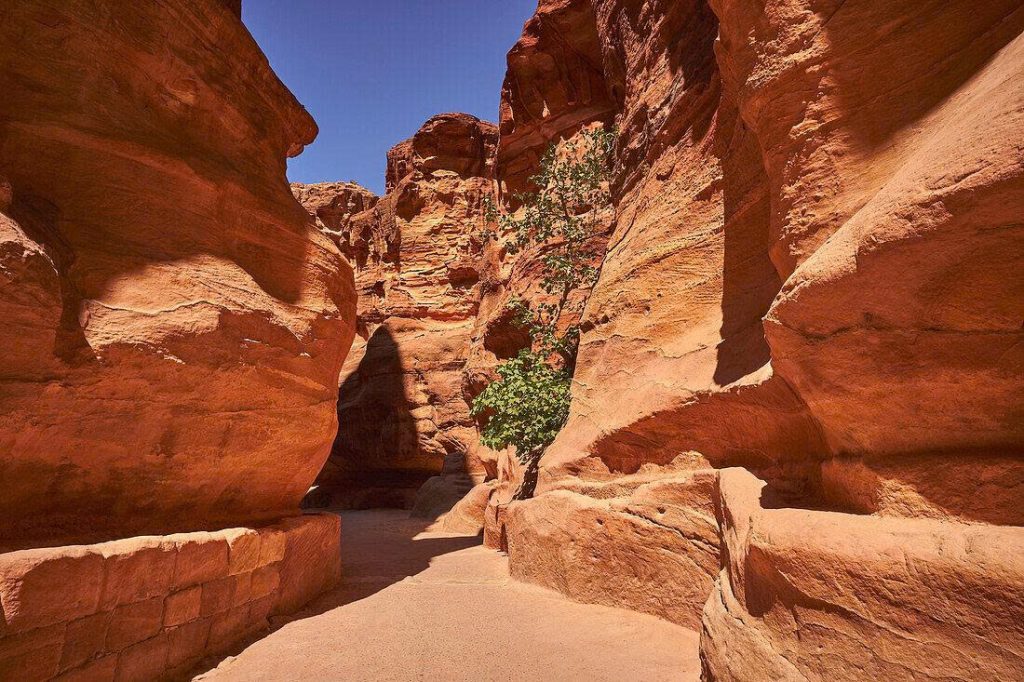
Petra is located in the town of Wadi Musa, about a three-hour drive south of Jordan’s capital, Amman.
- Getting There: Most travelers visit as part of a multi-day tour of Jordan (often combining it with the Wadi Rum desert) or take a public or private bus from Amman.
- Entrance: The only way to enter the historical site is through the Siq, a dramatic, narrow gorge (about 1.2 km long) whose sheer walls eventually open up to the stunning, unforgettable view of The Treasury.
- Major Sites: Beyond The Treasury, key sites include the Monastery (Ad Deir), the Royal Tombs, and the vast Street of Facades.
Tips and Getting there
- Passes: The site is immense. A two-day pass is highly recommended to explore both the main trail and the challenging hike up to the Monastery.
- Timing: Start your day early (gates open at 6:00 AM) to beat both the midday heat and the rush of day-trippers.
- Hydration: The desert heat is intense. Carry significant amounts of water and wear layers, as temperatures fluctuate dramatically.
- Tip: For a truly magical experience, book the “Petra by Night” event, where The Treasury is illuminated by thousands of candles—a powerful and unique photo opportunity. Be prepared for aggressive vendors offering donkey and camel rides; negotiate clearly and firmly.
RELATED: Petra Travel Guide 2026: Itineraries, Ticket Costs, and Tips
3. The Colosseum (Rome, Italy)
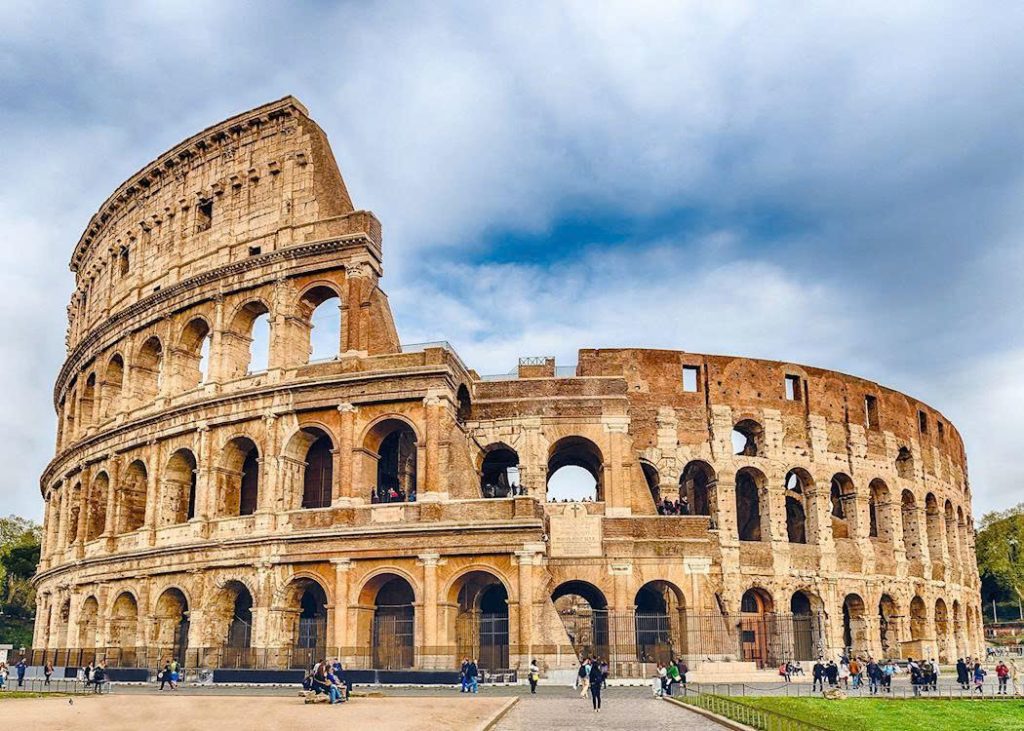
Located in the heart of Rome, the Colosseum is the largest magnificent amphitheater ever constructed and stands as an enduring symbol of the power and ambition of the Roman Empire. Built between 70-80 AD, it remains a marvel of ancient civil engineering.
History and Significance
Originally known as the Flavian Amphitheatre, the Colosseum was built under Emperors Vespasian and Titus and could hold an estimated 50,000 to 80,000 spectators. The amphitheater was used for a variety of public spectacles, including brutal gladiator contests, animal hunts (venationes), and public executions. Its grand scale and innovative design, including the intricate network of underground tunnels (Hypogeum), reflect the engineering prowess of the Romans. Despite centuries of damage from earthquakes and stone-robbing, the Colosseum remains a powerful, globally recognized symbol of Rome’s rich history and its enduring influence on Western civilization, inspiring the design of modern sports stadiums worldwide.
Location and Getting There
The Colosseum is centrally located in Rome and is exceptionally easy to access.
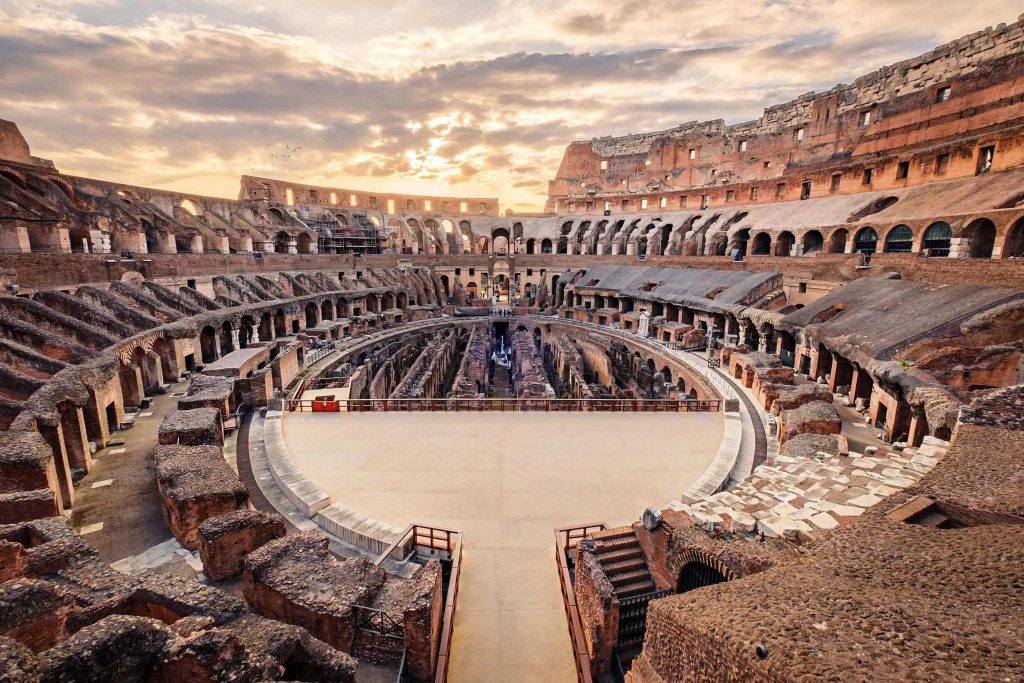
- It has its own dedicated metro stop (Colosseo on Line B) and is a key landmark within the ancient core of Rome, making it a short walk from the Roman Forum and Palatine Hill (often visited on the same combined ticket).
Travel Tips and Logistics
- Tickets are Critical: This is the most important tip: Buy your tickets online in advance (often a combined ticket for the Colosseum, Roman Forum, and Palatine Hill) to skip the notoriously long ticket lines, which can take hours.
- Guided Tours: For the deepest understanding of its function and history, a guided tour that includes access to the Underground Tunnels (Hypogeum) and the reconstructed Arena Floor is highly recommended. These access points are typically restricted to small group tours.
- Tip: The best time to appreciate the structure is either early morning or late afternoon, as the midday sun can be relentless, and the crowds peak between 11:00 AM and 3:00 PM. Allow at least 2-3 hours for the Colosseum alone.
RELATED: Top 20 Unforgettable Things to Do in Rome: The Eternal City
4. Chichén Itzá (Mexico)
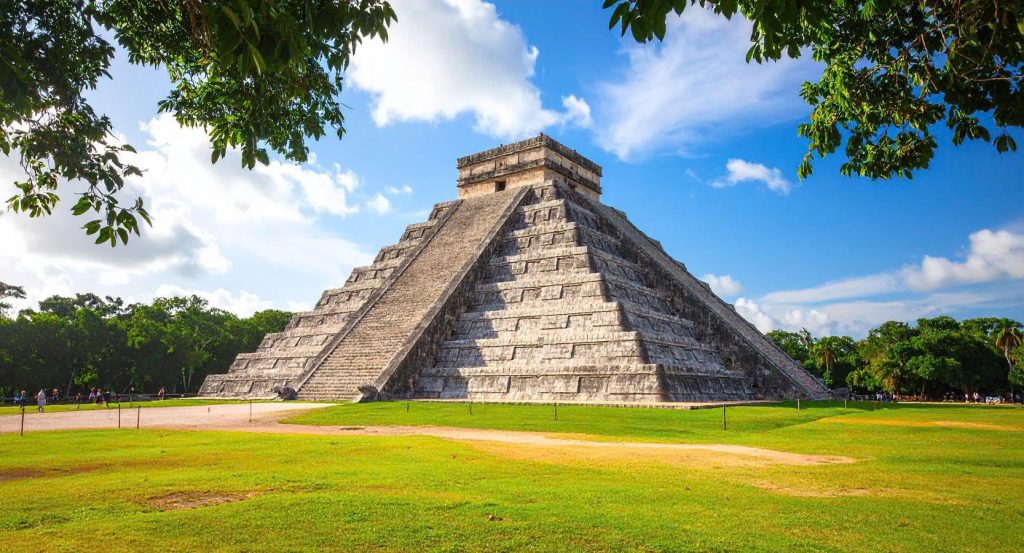
On the Yucatán Peninsula of Mexico, Chichén Itzá is a pre-Columbian city built by the powerful Maya civilization. It served as a major economic and religious hub from the 9th to 12th centuries, showcasing a remarkable blend of Maya and Toltec cultures.
History and Significance
The most iconic structure is El Castillo (The Temple of Kukulcán), a massive pyramid-shaped temple dedicated to the feathered serpent god Kukulcán. The pyramid’s design is a testament to the Maya’s advanced astronomical knowledge, serving as a gigantic calendar. Its most famous feature occurs during the spring and autumn equinoxes, when the sun’s shadow creates the illusion of the serpent crawling down the pyramid’s steps—a spectacle that draws thousands. Other key structures include the Great Ball Court, the Temple of the Warriors, and El Caracol (The Observatory), which demonstrates the Maya’s precision in tracking planetary movements.
Location and Getting There
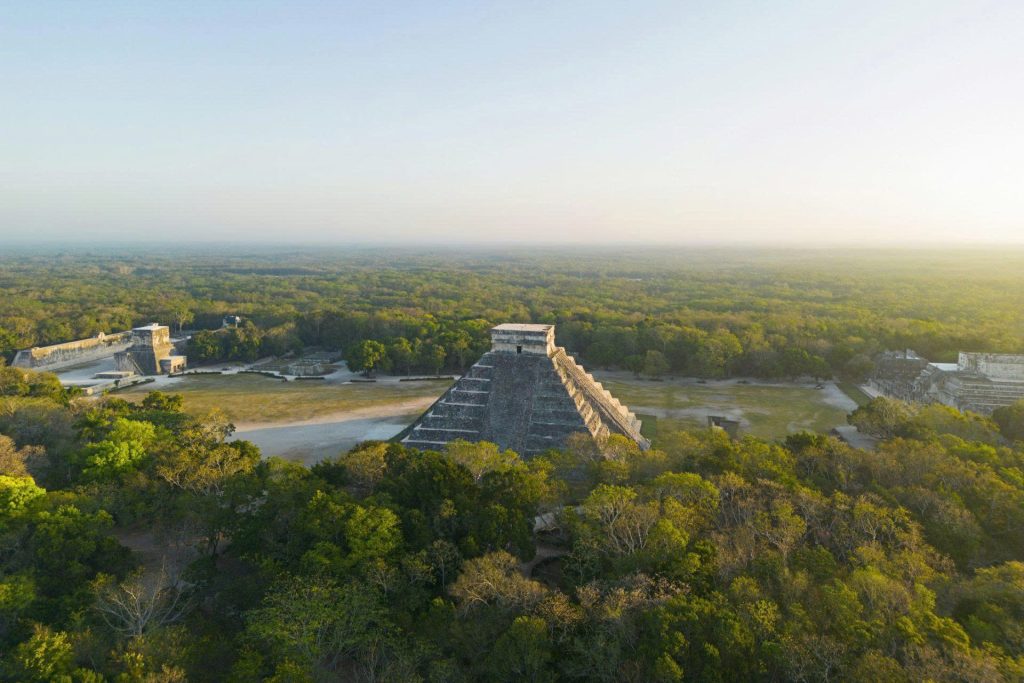
Chichén Itzá is a popular day trip destination, strategically accessible from the major resort areas:
- From Cancún, Tulum, and Playa del Carmen: The journey takes approximately 2 to 3 hours via the safe, well-maintained toll highway (cuota).
- Transportation: Options include organized tour buses (convenient but crowded), reliable ADO buses, or renting a car for maximum flexibility.
- Base Camps: The nearby colonial city of Valladolid is an excellent, charming base for travelers seeking to arrive when the gates open at 8:00 AM.
Tips and Getting there
- Timing: This is the most vital tip: Visit early in the morning (before 9:00 AM) to beat the intense tropical heat and the massive wave of tour buses that arrive mid-morning.
- Tickets: Be prepared for the two-part ticket fee (federal INAH and state CULTUR fees).
- Tip: Climbing the pyramid is strictly prohibited for conservation reasons. Wear comfortable shoes, a hat, and copious amounts of sunscreen, and bring plenty of water, as the site offers little shade. Combine your visit with a swim in a nearby cenote (like Ik Kil or Suytun) to cool off afterward.
RELATED: Chichén Itzá: Beyond El Castillo – Guide to All 7 Must-See Ruins
5. Machu Picchu (Peru)
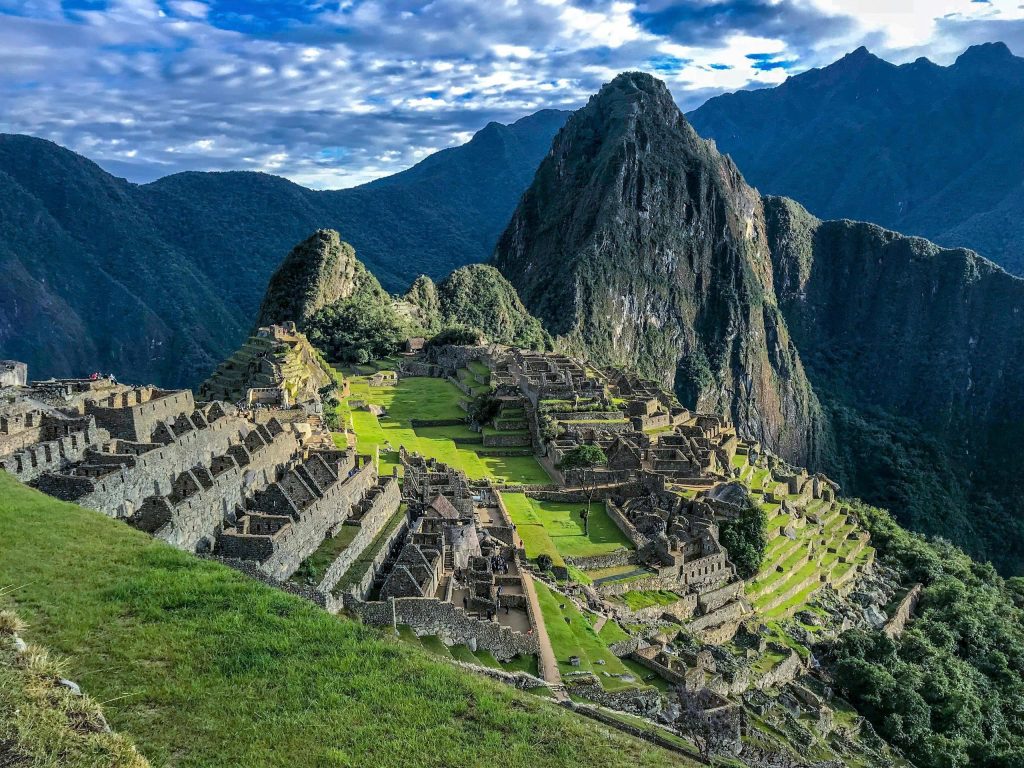
Nestled high in the Andes Mountains of Peru, Machu Picchu is a breathtaking 15th-century Incan citadel. Built at an altitude of 2,430 meters (7,970 ft), its exact purpose remains a mystery, though historians theorize it was a royal estate or a sacred ceremonial site.
History and Significance
Machu Picchu was abandoned around the time of the Spanish conquest in the mid-16th century and remained unknown to the outside world until its “rediscovery” by American explorer Hiram Bingham in 1911. Its breathtaking location, combined with the masterful stonework of the Inca (ashlar masonry where stones fit together without mortar), makes it a powerful symbol of Incan ingenuity, engineering prowess, and spiritual connection to the dramatic natural world. The Incas’ ability to construct such a complex city on a mountain ridge remains an engineering marvel.
Location and Getting There
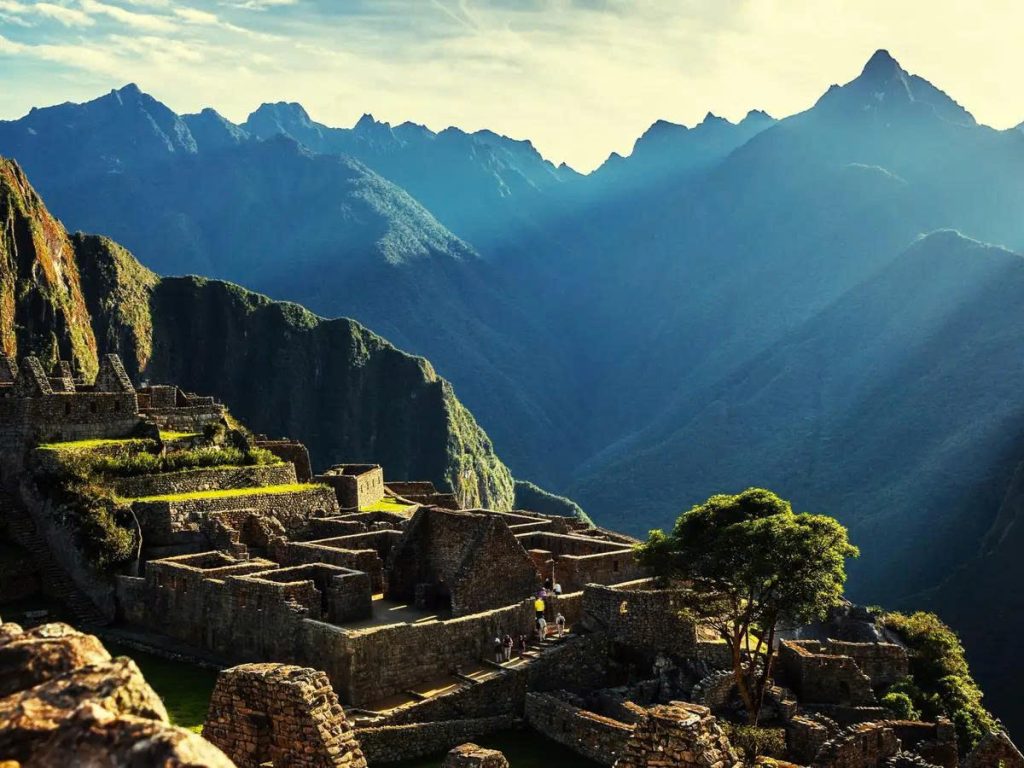
Accessing this remote wonder requires planning and coordination:
- The Classic Way: Hiking the multi-day Inca Trail (requires permits booked months in advance).
- The Common Way: Taking a train from the city of Cusco (or Ollantaytambo in the Sacred Valley) to the town of Aguas Calientes (Machu Picchu Pueblo), followed by a short bus ride up the winding road to the site entrance.
- Must-See: Major sites include the Temple of the Sun, the Intihuatana Stone, and the views from Huayna Picchu or Machu Picchu Mountain (separate tickets required).
Travel Tips and Getting there
- Booking is Essential: Tickets to the site, the train, and the Inca Trail must be booked months in advance, as Peruvian regulations strictly limit daily visitors.
- Altitude Acclimatization: Cusco sits at a very high altitude (3,400 meters). Spend at least two to three days in Cusco or the Sacred Valley to acclimatize before attempting any hikes or visiting Machu Picchu to avoid altitude sickness.
- Best Time to Visit: The dry season (May to October) is best, offering sunny days, though it is the busiest time. The shoulder months (April and November) offer a good balance.
- Tip: Wear layers, as the mountain weather changes rapidly. Bring your passport—it’s needed to enter the site and to get the optional Machu Picchu stamp.
RELATED: Machu Picchu Hiking Guide: Trails, Tickets, & Inca History
6. The Taj Mahal (India)
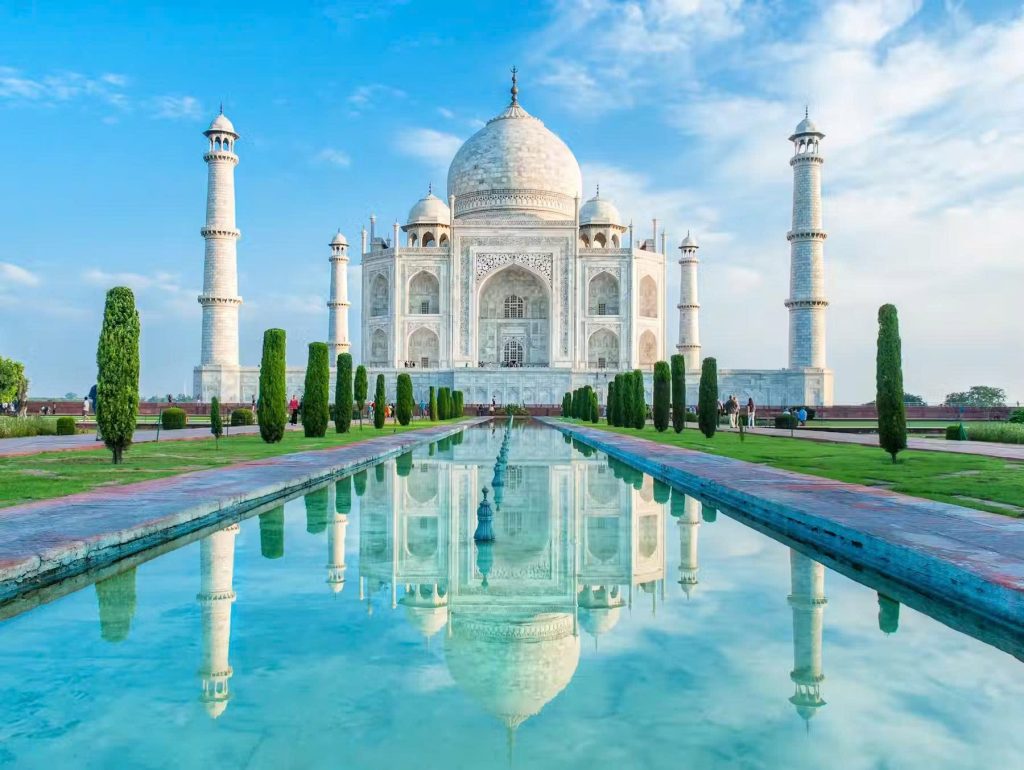
Located in Agra, India, the Taj Mahal is an exquisite ivory-white marble mausoleum. It was commissioned in 1632 by the Mughal Emperor Shah Jahan to house the tomb of his beloved wife, Mumtaz Mahal, who died while giving birth to their 14th child in 1631.
History and Significance
The Taj Mahal is universally considered one of the most beautiful buildings ever constructed and serves as the world’s most powerful symbol of eternal love. The complex took over 20 years to complete and involved thousands of artisans and craftsmen. The intricate marble carvings, the precise pietra dura inlay work (involving tens of thousands of semi-precious stones), and the perfect symmetry of the design reflect a harmonious blend of Islamic, Persian, Ottoman Turkish, and Indian architectural styles (Mughal architecture). Its domes, minarets, and reflective pool create a visual masterpiece that shifts color depending on the time of day.
Location and Getting There
The Taj Mahal is located in the bustling city of Agra, in the state of Uttar Pradesh.
- Getting There: Agra is easily reached from New Delhi via the rapid train network or by car (a 3-4 hour drive). Many travelers visit on a long day trip or an overnight stay from the capital.
- Best Views: The main gate provides the iconic view. Secondary viewing spots include the Mehtab Bagh (Moonlight Garden) across the Yamuna River for a stunning sunset perspective.
Travel Tips and Getting there
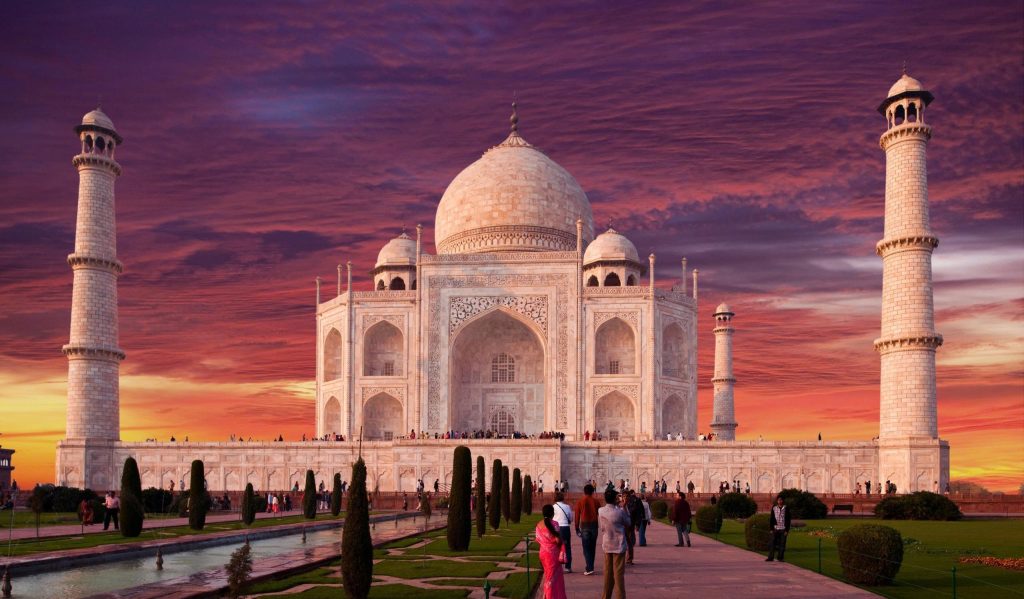
- Sunrise Visit: The absolute best time to visit is at sunrise. The marble glows with a soft, ethereal golden-pink light, and the crowds are noticeably smaller than later in the day.
- Dress Code: While there is no strict Western dress code, visitors should dress modestly out of respect for the mausoleum’s religious significance.
- Tickets: Tickets can be bought online, often offering a discount over the physical counter price. Note that the main crypt is sometimes closed.
- Tip: Photography near the main mausoleum can be challenging due to crowds; focus your photography on the reflective pool and the early morning light. The Taj Mahal is closed on Fridays.
RELATED: Ultimate Taj Mahal Guide: History, Tickets, and Sunrise Secrets
7. Christ the Redeemer (Brazil)
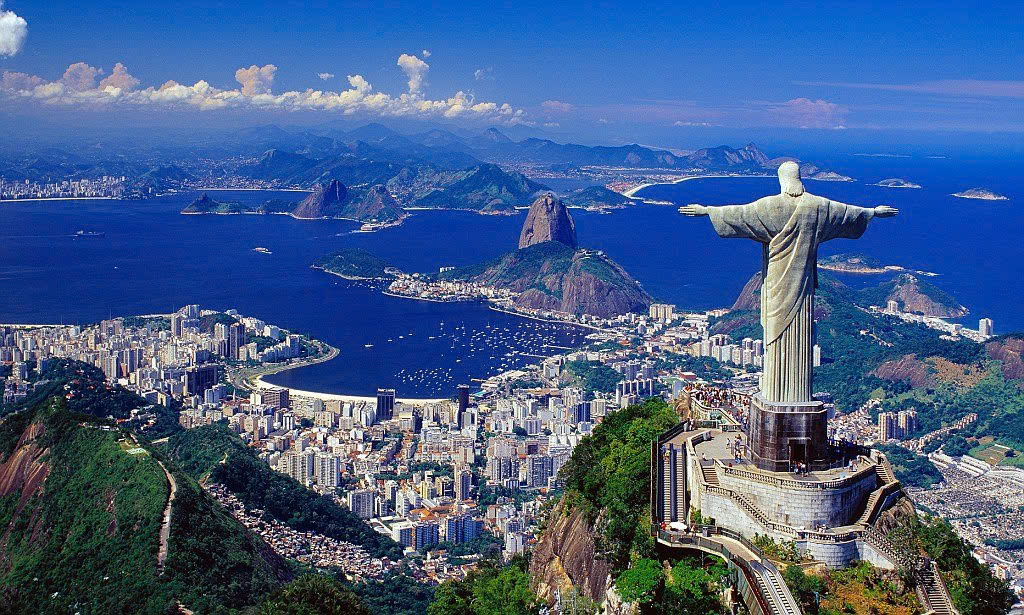 Christ the Redeemer is an iconic statue overlooking Rio de Janeiro, Brazil.
Christ the Redeemer is an iconic statue overlooking Rio de Janeiro, Brazil.
Overlooking the bustling city of Rio de Janeiro, Brazil, Christ the Redeemer (Cristo Redentor) is a colossal, iconic Art Deco statue of Jesus Christ. Located on top of the 700-meter (2,300 ft) Corcovado mountain, it serves as a powerful symbol of Brazilian Christianity and a welcoming embrace to all who visit.
History and Significance
The statue was completed in 1931, after five years of construction. Its design, a collaboration between French sculptor Paul Landowski and Brazilian engineer Heitor da Silva Costa, makes it one of the largest and most recognizable statues in the world, standing 30 meters (98 ft) tall on an 8-meter pedestal. Its sheer scale and position atop the mountain make it a national icon, a religious monument, and a globally recognized symbol of peace and faith.
Location and Getting There

The statue is located within the Tijuca National Park in Rio de Janeiro.
- The Cog Train: The most classic and scenic way to reach the statue is by taking the dedicated Corcovado Rack Railway (cog train) from the Cosme Velho station. The ride offers beautiful views through the dense rainforest.
- Vans and Hiking: Visitors can also take authorized vans from various points in the city or, if adventurous, hike up the mountain trail (though this is difficult and less common).
Travel Tips and Getting there
- Clear Day Rule: Visit on a clear day! Clouds and fog frequently envelop the mountain peak, blocking the view of the statue and the incredible cityscape below. Check the mountain forecast before you go.
- Tickets and Wait Times: Buy your train or van tickets online in advance. Wait times for the train can be lengthy during peak tourist season.
- Tip: Early morning visits are generally better for clear skies and smaller crowds. Be mindful of personal belongings, especially at crowded viewing platforms. The views of Sugarloaf Mountain and the famous beaches (Copacabana and Ipanema) from this vantage point are unsurpassed.
RELATED: Top 20 Things to Do in Rio de Janeiro: Ultimate 2026 Guide
The New 7 Wonders of the World represent a diverse and magnificent collection of human achievement, spanning thousands of years and every continent. Each site tells a unique story, from the military ambition encapsulated by the Great Wall of China to the spiritual devotion behind the Taj Mahal and the astronomical genius of Chichén Itzá.
These are more than just landmarks; they are living testaments to humanity’s creativity and ingenuity. They remind us of the incredible feats possible when civilizations dedicate their resources and vision to a shared goal, whether that goal is defense, worship, remembrance, or celebration. Exploring them is an extraordinary journey that offers a deeper understanding of our shared global heritage and the timeless, universal spirit of adventure.




